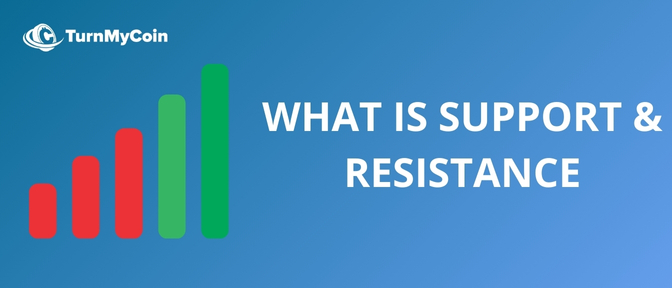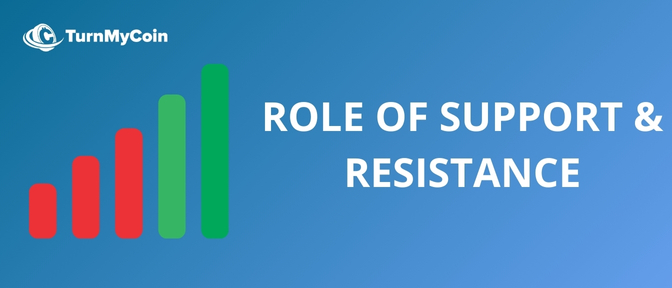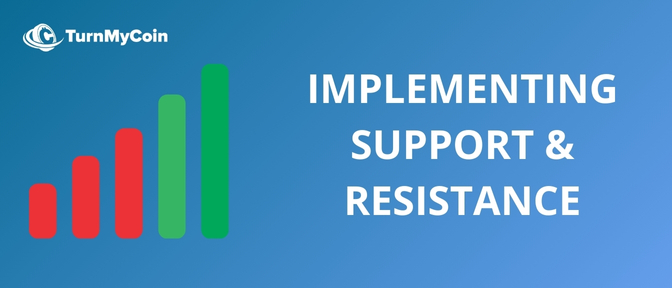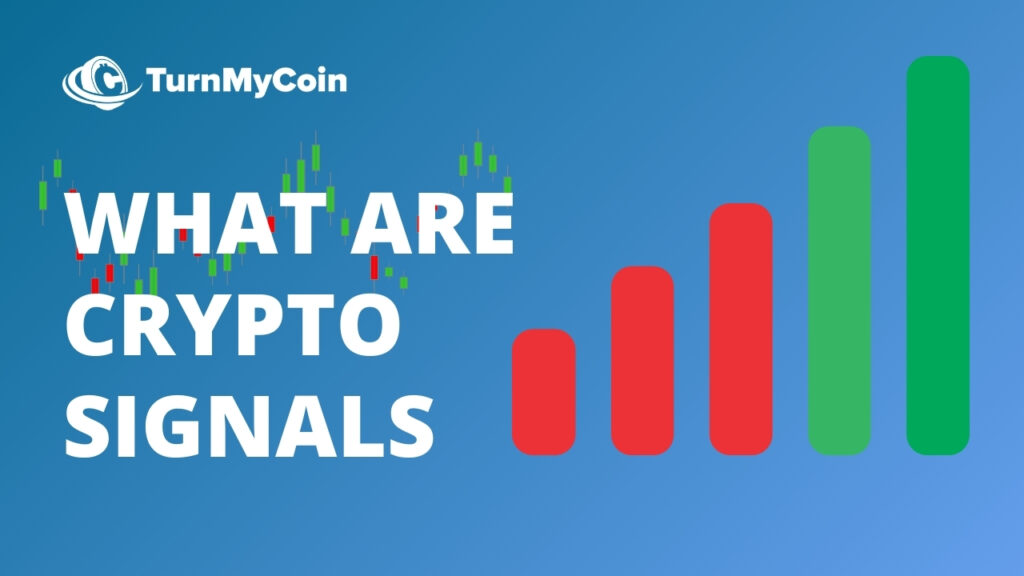Last updated on April 24th, 2024 at 07:19 am
Introduction
In the frantic cryptocurrency trading environment, knowing market signals is crucial for sound decision-making. Cryptocurrency signals are helpful indicators which help traders navigate the volatile digital assets.
In a cryptocurrency environment where profit maximization and risk minimization are ongoing pursuits, trading signals appear as alerts sent by either automated software like 3Commas, Pionex or technical analysis tools or human analysts.
Shaped by market analysis and chart patterns, these signals can offer insight into when you should buy, sell or even hold a cryptocurrency. Key concepts for traders are support and resistance levels, which are fundamental to technical analysis.
This article will discuss the signals of cryptocurrency and support & resistance.
Suggested Reading: What are Crypto Tokenomics?
Table of Contents
What are Cryptocurrency Signals?
Crypto signals are trading recommendations for purchasing or selling crypto at a specified time and price. Developed from manual research by professionals or automated algorithms and software utilizing certain indicators, these signals can be used by investors and traders to monitor the cryptocurrency markets.
With cryptocurrency markets being extremely volatile, these signals offer essential data for traders to continue with market conditions and make educated choices.
Generally, trading signals are produced by a computerized technical analysis-based strategy on the provider’s servers. Signal providers conduct thorough market and technical analysis with technical indicators and advanced algorithms to detect trends in the market, trade volumes along other relevant factors.
Traders are informed of a possible profit opportunity via email, social media or SMS together with suggested parameters for a position. Moreover, signals might be embedded in trading platforms so trades could be executed without leaving the investment software.
Information in crypto trading signals typically refers to particular cryptocurrencies, entry and exit points, stop loss levels and expected earnings targets. Diverse signal types apply distinct characteristics and analysis methods to include trend, momentum and volatility signal types.
But automation has a trade-off: it can’t reject signals case-by-case. To move around this, traders can filter the signals they get. They may specify preferred assets for notifications and limit times for position openings.
Customization options differ based on individual traders’ preferences in addition to strategies: scalpers and day traders utilize shorter timeframes while others work with hourly or eight-hour chart notifications.
Such flexibility acknowledges the differing methods in the cryptocurrency space, giving a customised service to traders.
Support & Resistance Levels

Support and resistance levels are concepts fundamental to Technical Analysis and are the basis of price chart interpretation. These are crucial concepts for traders looking for key points where an asset’s price may shift dramatically.
Support
Support is a price level that a cryptocurrency traditionally had trouble dropping below. In other words, it’s a floor metaphor which stops the price from slipping more. Traders track support levels to spot opportunities to buy, along a rebound out of a support level might signal a strengthening of the cryptocurrency’s value.
For instance, if a cryptocurrency keeps rebounding out of a USD 50 price point, then there’s probably massive purchasing interest each time that price level approaches. Investors can utilize this information to place purchase orders or other tactical moves in anticipation of a price rebound.
Resistance
Contrastingly, Resistance is a price level that a cryptocurrency has historically been unable to break. It imposes a metaphorical ceiling on price movements upward. Identifying resistance levels is crucial information for traders about profit-taking decisions or opening short positions.
Suppose a cryptocurrency keeps getting sold at USD 100. In this particular case, USD 100 acts as a resistance level and also signifies intense selling interest when the price approaches this level. Traders may sell or take profits once the price reaches resistance, which represents a historical hurdle which the cryptocurrency must overcome.
Role of support & resistance in trading strategies

Now we established the significance of support and resistance, let us discuss just how these levels could be utilized to Support Trading.
1. Breakouts & breakdowns
One common trading strategy is finding Breakouts and breakdowns at resistance and support levels. A breakout occurs once the price breaks a resistance level, indicating possible upward momentum. On the opposite, a breakdown takes place in case the price breaks below a support level, showing a direction down.
Traders watch these breakouts and breakdowns for opportunities. For instance, a cryptocurrency that breaks a resistance level might offer traders a buy signal, anticipating further gains. Conversely, a break below a support level might be a chance to sell for traders expecting a decline.
2. Trend reversals
Support & Resistance levels also help to determine possible Trend Reversals. If a cryptocurrency price constantly approaches a resistance level but fails to breach it, this could signal a trend reversing downwards. Conversely, a cryptocurrency which bounces back from a support level consistently could signal a turn from a downward trend to upward one.
Traders may use these reversal signals to correct their positions. Detecting the signals of a trend reversal early enables traders to exploit new market dynamics and adapt their strategies to the trend.
3. Range bound
Trading Support & resistance levels are relevant for range-bound markets where the price moves within a range. Traders might profit from these price moves by buying near support levels and selling near resistance levels.
In a range-bound market, a trader might set buy orders whenever the price approaches a support level and sell orders when it gets to a resistance level. This strategy enables traders to exploit the recurrent dynamics of price moves within a range to make money from the swings between resistance and support.
Implementing Support & Resistance

Analysis Now we’ve discussed the importance of Support and resistance in trading, let’s discuss how traders can execute these analyses.
1. Price Charts
Price charts and Technical analysis tools: Price charts are vital for support & resistance Analysis. Traders often plot historic price movements and identify key levels using line charts, bar charts and candlestick charts.
Also, technical analysis tools like trendlines, moving averages and Fibonacci retracement levels can help determine support and resistance zones.
2. Trendlines
Trendlines are particularly helpful for connecting the highs & lows of price movements to show the trend. Moving averages smooth out price data and show trend direction better. Fibonacci retracement levels reveal support and resistance levels according to key Fibonacci ratios.
3. Volume analysis
Confirmation with volume analysis While Analysis of support and resistance levels on price charts is important, Volume Analysis adds another layer of dependability. The volume will be the number of units or contracts traded, indicating market activity.
A price movement near a support or resistance level accompanied by a big rise in volume increases the significance of that level. High volume at a breakout or breakdown implies more market participation and confirmation for traders to act on opportunities.
Conclusion
The dynamic nature of cryptocurrency markets requires constant learning and adaptation. Traders should seek new information, monitor the market changes and adapt their strategies according to the changes in the environment.
Learning Cryptocurrency signals and support & resistance analysis enables traders to make informed choices, to ride the market volatility and to seize opportunities.
Keeping up with technical changes, regulatory changes and community insights is crucial for traders desiring to grow as the cryptocurrency landscape changes.


